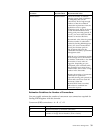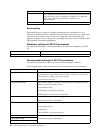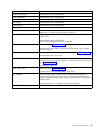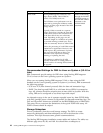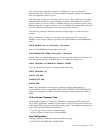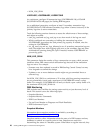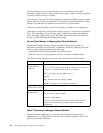
Feature Description Value
Limitations
The following list provides limitations that
apply to the currently committed semantics:
v The target table in sections that is used
for data update or delete operation does
not use currently committed semantics.
v An uncommitted modification to a row
forces the currently committed read
operation to access appropriate log
records and determine the currently
committed version of the row. Although
log records that are no longer present in
the log buffer can be physically read,
currently committed semantics does not
support the retrieval of log files from the
log archive.
v The following scans does not use
currently committed semantics:
– Catalog table scans
– Referential integrity constraint
enforcement scans
– LONG VARCHAR or LONG
VARGRAPHIC column reference scans
– Range-clustered table (RCT) scans
– Spatial or extended index scans
Statement
concentrator
DB2 uses less server resources while
processing queries that have parameters
instead of queries that have literal values in
them. DB2 will compile an SQL statement
once and will cache it. It presents the same
query execution plan from the cache the
next time for the same query thereby
utilizing fewer resources to
compile/prepare the same statement.
However, it becomes a difficult task when
SQL statements use literal values instead of
parameters matching incoming statements
to what is already present in the statement.
To prevail over this situation, statement
concentrator modifies dynamic SQL
statements at the database server so that
similar, but not identical, SQL statements
can share the same access plan.
You can enable
statement
concentrator by
running the following
SQL statement:
db2 update db cfg
for <db-alias> using
stmt_conc literals
Performance Management 43







